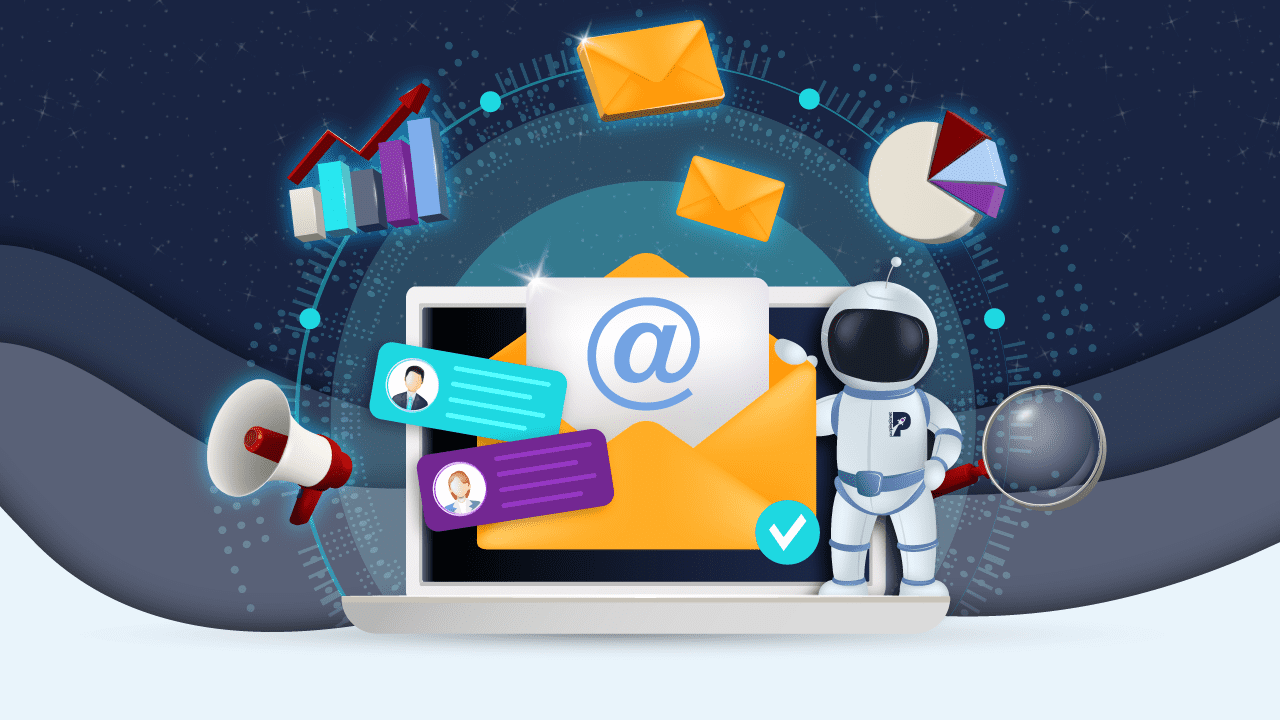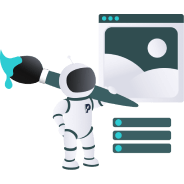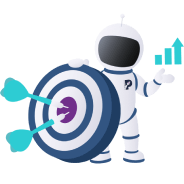

10 Email Marketing Best Practices
Whether you’ve got an outdated email marketing campaign or you’re about to create your very first, there are some dos and don’ts to know before you master the craft. From modernising your design choices to creating effective CTAs, here are the best practices you should adopt.
Across all kinds of industries and companies, email marketing is a significant component of customer acquisition efforts. It’s not surprising: email marketing is a brilliant way to generate and convert leads, reengage distanced subscribers, reward loyal customers, and promote your brand.
Email marketing has been around for a while. Chances are you’ve got a system in place already. But things change, and internet users are becoming accustomed to higher quality promotional emails. Whether yours is a new or old email marketing program, you’ll want to keep it in good shape.
If you don’t keep it in good condition, some risks arise. Firstly, having outdated or uninteresting emails means you’ll lose a lot of leads, which is bad enough in itself. But as a result, your email open rate will drop, which can damage your reputation as a sender and potentially label you as spam. Furthermore, ineffective email flows can break sales funnels, causing you to lose potential customers.
This article will discuss some key areas you can address. Once you’ve ticked each item off your list, you can rest easy knowing you’ve got an optimised email marketing program.
Here are our 10 email marketing best practices to keep your emails in tip-top shape.
1. Personalise your emails
Knowing and understanding your recipient audience is highly important. When you take the right steps toward personalising your emails, recipients will respond better and be more likely to engage with your brand.
Once you have data on your audience, you can use it to personalise your emails. Unfortunately, new companies with little to no customer data will find email personalisation difficult. The quicker these businesses get their emails out there, the quicker they can obtain data and personalise their future emails.
Personalisation can mean having subscriber names at the top of your emails, as well as tweaking anything that caters your emails toward specific audiences.
To understand your audience better, we’d recommend asking yourself these key questions. They’ll help personalise your email efforts:
- When does your audience prefer to receive emails?
This will help you decide the day and time you send your emails.
- Does your audience respond better to formal or informal language?
This will help you distinguish the tone of your email copy.
- Do you know your subscribers’ birthdays?
If you already have access to this data, you can begin sending special offers on users’ birthdays. If you don’t, you could incorporate this step into your email sign up process.
- What’s the average age of your audience?
Knowing this will influence things from the tone of your emails, whether you mention current events, and the types of products you promote to specific audience segments.
- What types/categories of products do certain groups tend to buy more of?
This will help you when it comes to sending out promotions based on audience segments.
If you want to send out a special offer that only applies to a specific product type, you shouldn’t send this to everyone on your mailing list. For example, if you were a vape retailer and had a special offer on CBD vapes, you’d send out the offer to your customers who have bought CBD vapes before. This will protect your sender reputation as uninterested customers may view it as spam.
Including customer names in your emails is a huge part of personalisation. Many modern emailing tools allow you to do this. You can also use dynamic content to provide special content for segments of your audience. For instance, you could send recipients promotions they can access in their location by collecting their geographic data.
Epitomising email flows are automations. Automations make personalised sales funnel efforts easy. By setting up certain emails when recipients take specific actions, you can guide them through the sales funnel journey at every step.
Top tip: Send out welcome emails when users subscribe, abandoned cart emails when they fail to complete a purchase, or re-engagement emails when recipients have stopped engaging with you.
2. Perfect your call to action
If your emails don’t drive people to your site, you’ll never turn them into customers.
Many experts recommend keeping to just one CTA per email so that recipients aren’t distracted or confused. However, you can use this same CTA multiple times throughout your email so they can click on it at any time whilst scrolling through your email.
Entice recipients in with the email by suggesting they’ll gain benefits from clicking on the link and going to your landing page. Keep the CTA snappy, relevant, and engaging. You might even want to outsource help with your CTA from a UX designer who will know about optimising their design.
Top tip: ensure your CTA, email, and landing page are harmonious and the same in design. This ensures continuity and nurtures the idea that users are on a journey.
3. Value quality, not quantity
When recipients get too many emails from companies they’ve previously engaged with, they feel overwhelmed and like you’re spamming them. It can become very irritating to receive promotional emails too frequently and push leads away.
This is called email fatigue, and it can lead to users unsubscribing, disengaging, and even marking your emails as spam. You can fight email fatigue by reducing the number of emails you send and keeping content relevant to segments of your audience.
Take your time and look at mailing list segmentation seriously. Sending relevant content to your subscribers is one of the most significant things you can do to get results. You can look at things like gender, age, purchase history, purchase frequency, and geography to hone in on what different segments want to see in their inboxes.
Top tip: If you’re desperate to find out what your audience thinks “quality” emails are – ask them! Create a survey and send it out to ask what your subscribers want to see more or less of. If they feel particularly strongly about the issue, they’ll likely reply.
4. Include links to your other platforms
You want to make it easy for users to engage with and follow your brand. Linking your social media platforms within your emails is one of the best ways to do this. You can also suggest that they share your email with friends or family – especially if there’s something in it for them, such as a “Refer a Friend” discount.
Top tip: You could do a weekly email that includes all your recent social media posts, and write in the subject line, “Have You Seen Our Latest Posts?”.
5. Reward loyalty
You’ll want to reward your loyal customers. You can do this by offering some appreciation for those recipients who make a lot of orders and frequently share your emails. It’s a very popular customer retention technique to offer special discounts to returning customers.
Top tip: Allow your loyal customers to sign up for a birthday program where they can get special discounts around their birthdays.
6. Welcome newcomers properly
The people who have just subscribed to your mailing list are at their most interested stage. That’s why you should create an effective and engaging welcome sequence. If you get it right, you’ll be on your way to completing a successful sales funnel.
Firstly, make sure site visitors have ample opportunity to sign up for your mailing list when they explore your website. Then, you’ll want to send a welcome email once they complete the form. Make sure your welcome email has high-quality visual elements, convincing copy, and an enticing CTA. It’s also common practice to offer a first-time buyer discount.
Your welcome email could also help navigate your site or explain how your unique business works. If you have any data on why previous subscribers have disengaged, you could answer any potential FAQs at this point to prevent confusion.
Top tip: Your first email to new subscribers should be easy to navigate.
7. Keep tabs on the data
You must stay in touch with how your emails are performing. How will you know that they’re working effectively if you don’t? Email marketing metrics can help you make important changes to your strategy that, in turn, improve subscriber engagement, lead conversion, and brand awareness.
Here are some of the metrics you’ll want to keep an eye on:
- Time of day that emails are opened
Sending your emails out at the right time can significantly positively affect brand engagement.
- Unsubscriber rate
If this rate has rapidly increased or decreased after changing your campaign, you’ll know very quickly whether it’s been effective.
- Click rate
This metric can help you know if you need to make your emails more engaging and “clickable”.
- Open rate
Want to know who’s interested in your emails? Your open rate will tell you that. Comparing your open rate to your click rate will provide some insight into how enticing your emails are and if you’ve got your personalisation efforts on point.
- Earnings per subscriber
Anyone concerned with financing an email marketing campaign will be concerned with this one. Make sure that your campaign is making more money than it’s costing.
Top tip: No single metric should determine your email marketing strategy. Make sure you take a holistic view of your campaign’s performance to get a thorough understanding.
8. Make your emails look good
These days, too many businesses’ emails look outdated. This can result in users finding your brand untrustworthy or just not interesting enough to engage with. Above all, your emails should be easy to navigate, clear in purpose, and encourage CTAs.
You want your subscribers to know (and recognise) who’s sending them an email. So, make sure your brand’s logo and colours are at the forefront. Keep everything on-brand – from your CTAs, landing pages, and every email.
Maintain the right balance between images and text. GIFs can also be engaging pieces of multimedia. The text should be friendly, clear, and engaging. You should take steps to understand what your audience wants to see before you send out emails. For example, if your demographic is women between the ages of 20 and 30, look at how other companies with that audience are designing their emails for inspiration.
You’ll also want your emails to be mobile-friendly. More than 70% of emails are opened on mobiles, so this format must be catered for.
As well as making your emails look good, you’ll want to give off a good impression. One of the most annoying things for email subscribers is the dreaded “no-reply” account. You shouldn’t use this, as it will only disengage your audience if they want to reply or need some customer service help. Even with recipients who don’t need to reply, a “no-reply” address can come across as unfriendly.
Top tip: Make that subject something that will stand out in your recipients’ inboxes.
9. Test your emails first
Imagine this: you’ve spent loads of time and money creating the perfect email sequence, so you send it out. Then, you realise that it doesn’t show up on certain mobile devices and email providers.
This problem is easily solved by sending test emails to staff members before launching your email marketing campaign.
When you test your emails, make sure they look how you want them to look and that all clickable elements are functioning as intended. Plus, make sure you test your emails on different types of mobile devices and email providers (Gmail, Yahoo, and Outlook, for example).
You can also conduct email performance tests with different campaigns. By differing each one slightly and comparing results, you can check how different variables affect performance. For instance, you could test which time of day receives the most opens and clicks or test the efficacy of different phrases in your subject lines.
Remember that if you want to test the efficacy of new changes, only test one at a time. If you change four different things on your emails and suddenly get great results, you won’t know which thing worked the best.
10. Remove inactive recipients
Having a high number of inactive recipients means your email open rate will drop. This can be problematic as it worsens your sender reputation. Email providers such as Google keep tabs on this, and you don’t want them to identify you as spam.
We’d recommend having a clear-out of your mailing list every three months. If recipients haven’t engaged with your emails in that time, it’s doubtful that they ever will.
It might sound counter-intuitive but making it easy for your email recipients to unsubscribe could be valuable to you. It’s entirely natural for some people to decide one day that they don’t want to receive your emails. Since these users will stop engaging with your emails and therefore threaten your reputation as a sender, it’s better for your company if you let them go.
Do not make the unsubscribing process complicated. If it is, uninterested recipients will just hit the spam button. Once you decide to start tackling email fatigue, you could send inactive subscribers an email asking, “do you still want to hear from us?” and allow them to unsubscribe easily. If they don’t reply, remove them yourself.
Top tip: Offer a discount to disengaged users to see if they reengage.
Final thoughts
Your emails will be a fundamental part of user engagement, customer acquisition, sales funnels, and brand promotion. The significance of email marketing means that your process must be nurtured and perfected, as its potential results are so huge.
If you follow these email marketing best practices, you’ll be well on your way to having an email program that delivers results: whether you want to convert leads into customers, reengage distanced subscribers, modernise your style, promote your brand, or increase your reputation as a sender.











